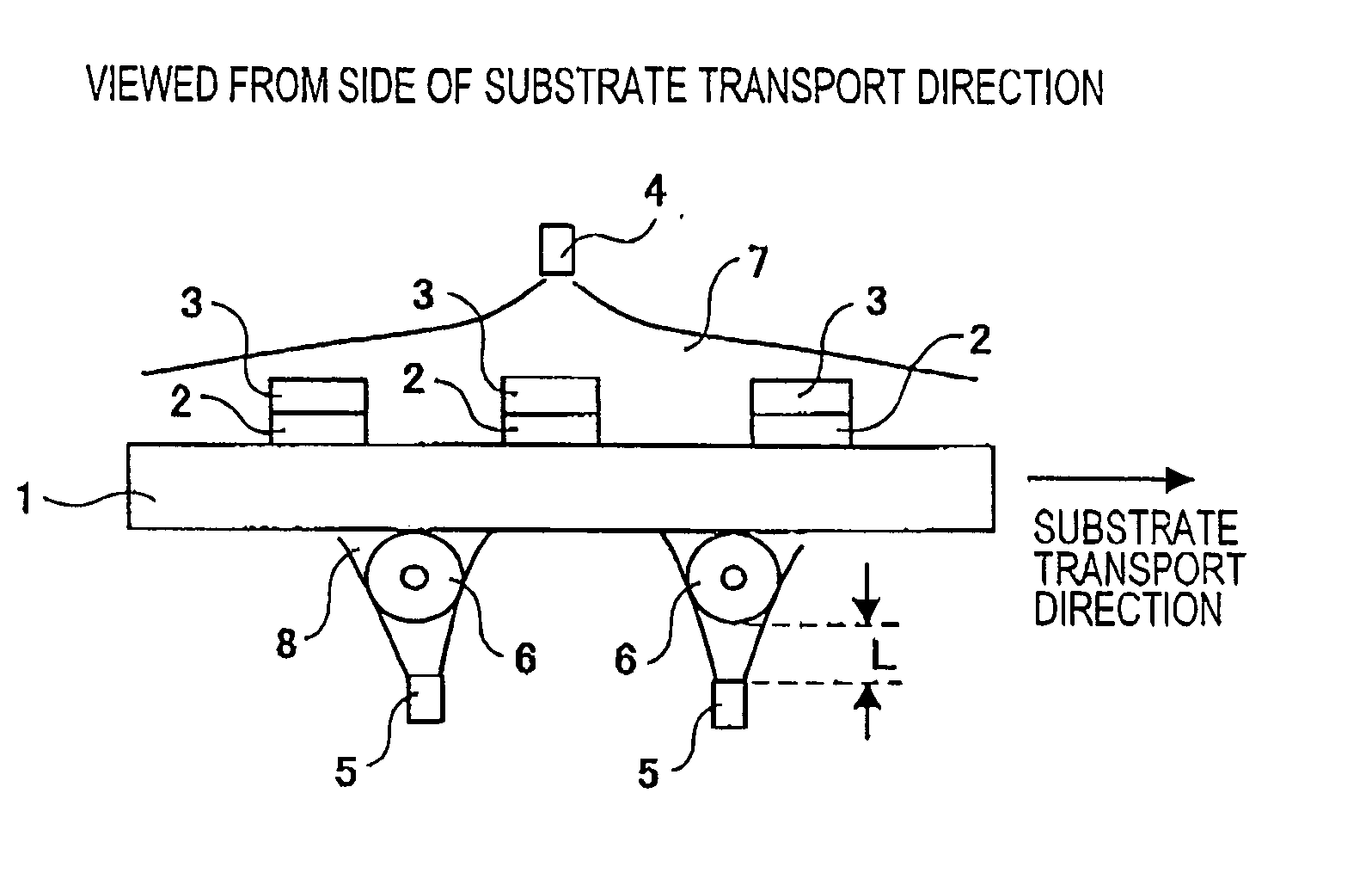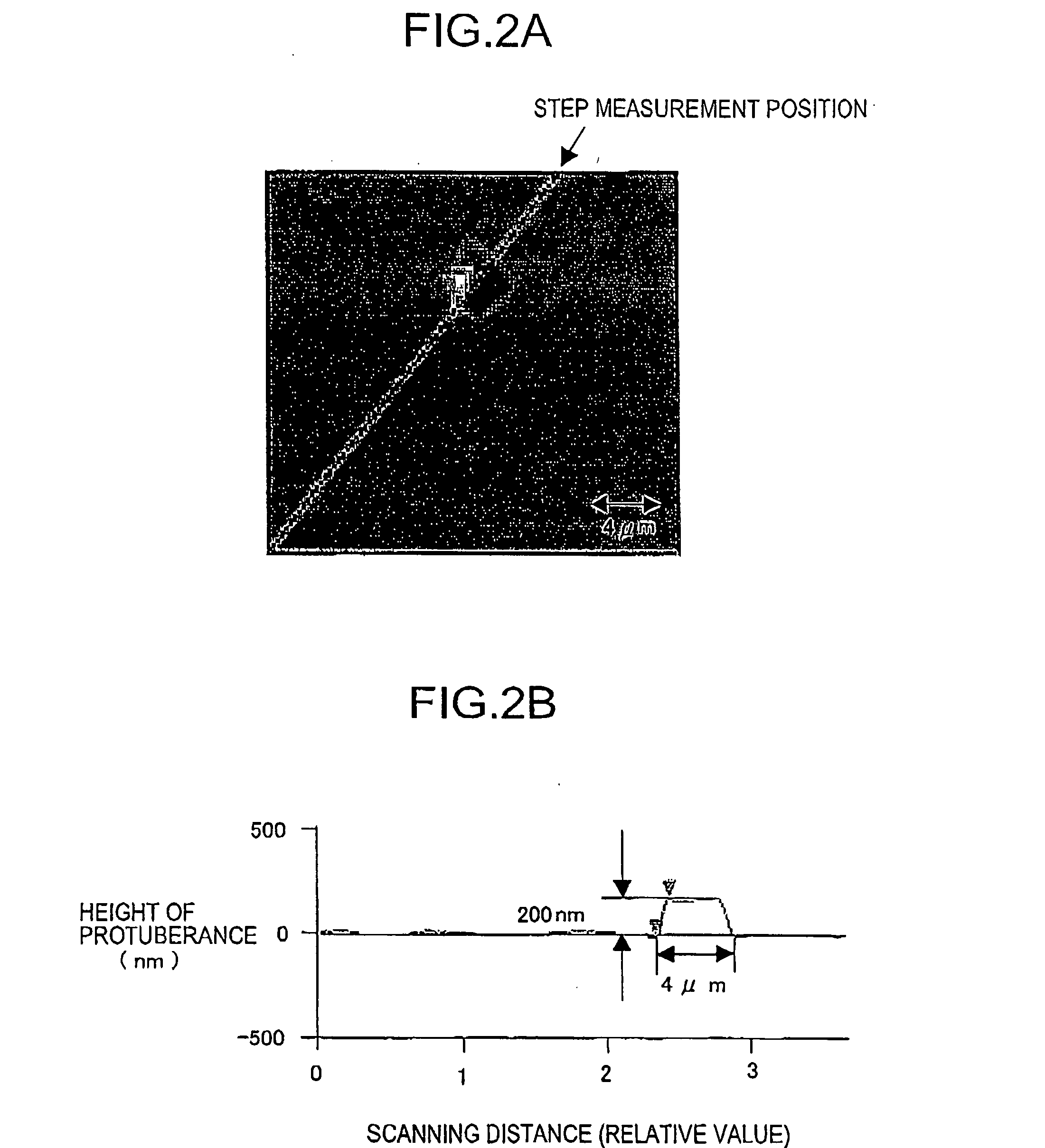Method for manufacturing display device and display device manufacturing apparatus
a display device and manufacturing method technology, applied in the direction of identification means, instruments, cleaning using liquids, etc., can solve the problems of display performance not being uniform, quality problems of display devices, etc., and achieve the effect of lowering display quality
- Summary
- Abstract
- Description
- Claims
- Application Information
AI Technical Summary
Benefits of technology
Problems solved by technology
Method used
Image
Examples
example 1
[0051]FIGS. 6A to 6D schematically illustrate the steps of manufacturing a polycrystalline TFT (thin-film transistor) used in liquid-crystal display devices. FIG. 11 is a flow chart of its manufacturing steps.
[0052] First, as shown in FIG. 6A, on a glass substrate 1 having been cleaned in a cleaning step (S120), an amorphous silicon film 10a (layer thickness: 10 to 100 nm) is formed by a well known process CVD (chemical vapor deposition) (S121). Thereafter, the amorphous silicon film 10a is cleaned (S122)
[0053] This amorphous silicon film 10a is crystallized by means of an excimer laser or the like to form a polycrystalline silicon film 10b (S123), and the substrate is cleaned (S124).
[0054] Next, as shown in FIG. 6B, the polycrystalline silicon film 10b is worked in a predetermined size, and thereafter, on this polycrystalline silicon film 10b, a gate insulation film 11 (silicon oxide film of about 100 nm in layer thickness) is formed by a well known process, e.g., plasma TEOS (T...
example 2
[0066] The glass substrate used in etching, the thin film to be treated, the etching apparatus and the etching conditions are the same as those in Example 1. What differs from Example 1 is the method of supplying the second solution, and the method shown in FIGS. 4A and 4B is used in this Example 2.
[0067] That is, as shown in FIG. 12, in the step of forming contact holes (S132′), in order to immediately remove the insoluble residues having adhered to the back of the glass substrate 1, the apparatus is so set that the second solution is supplied through nozzles so disposed that the second solution 8 is jetted to regions where the supporting members 6 and the back (the side on which no thin film is formed) of the glass substrate 1 come into contact, and in the direction opposite to the glass substrate 1 transport direction (the direction shown by an arrow A in FIG. 4A).
[0068] Results of the foregoing are shown together in item (2) in Table 1. Like the case of Example 1, it was able ...
example 3
[0069] The glass substrate used in etching, the thin film to be treated, the etching apparatus and the etching conditions are the same as those in Example 1. What differs from Example 1 is the method of supplying the second solution, and the method shown in FIGS. 5A and 5B are used in this Example 3. That is, the nozzles 5, which are positioned below the supporting members 6, are disposed between supporting members 6 adjacent to one another in the direction of transport of the glass substrate 1. Then, as shown in FIG. 12, in the step of forming contact holes (S132′), the apparatus is so set that the second solution jetted from the nozzles 5 is supplied to regions where adjacent supporting members 6 each come into contact with the back of the glass substrate 1. The position of each nozzle 5 disposed between adjacent two supporting members 6 (the distance between the nozzle and each supporting member is 5 to 100 mm) may preferably be the middle of the two supporting members.
[0070] Re...
PUM
| Property | Measurement | Unit |
|---|---|---|
| distance | aaaaa | aaaaa |
| size | aaaaa | aaaaa |
| width | aaaaa | aaaaa |
Abstract
Description
Claims
Application Information
 Login to View More
Login to View More - R&D
- Intellectual Property
- Life Sciences
- Materials
- Tech Scout
- Unparalleled Data Quality
- Higher Quality Content
- 60% Fewer Hallucinations
Browse by: Latest US Patents, China's latest patents, Technical Efficacy Thesaurus, Application Domain, Technology Topic, Popular Technical Reports.
© 2025 PatSnap. All rights reserved.Legal|Privacy policy|Modern Slavery Act Transparency Statement|Sitemap|About US| Contact US: help@patsnap.com



